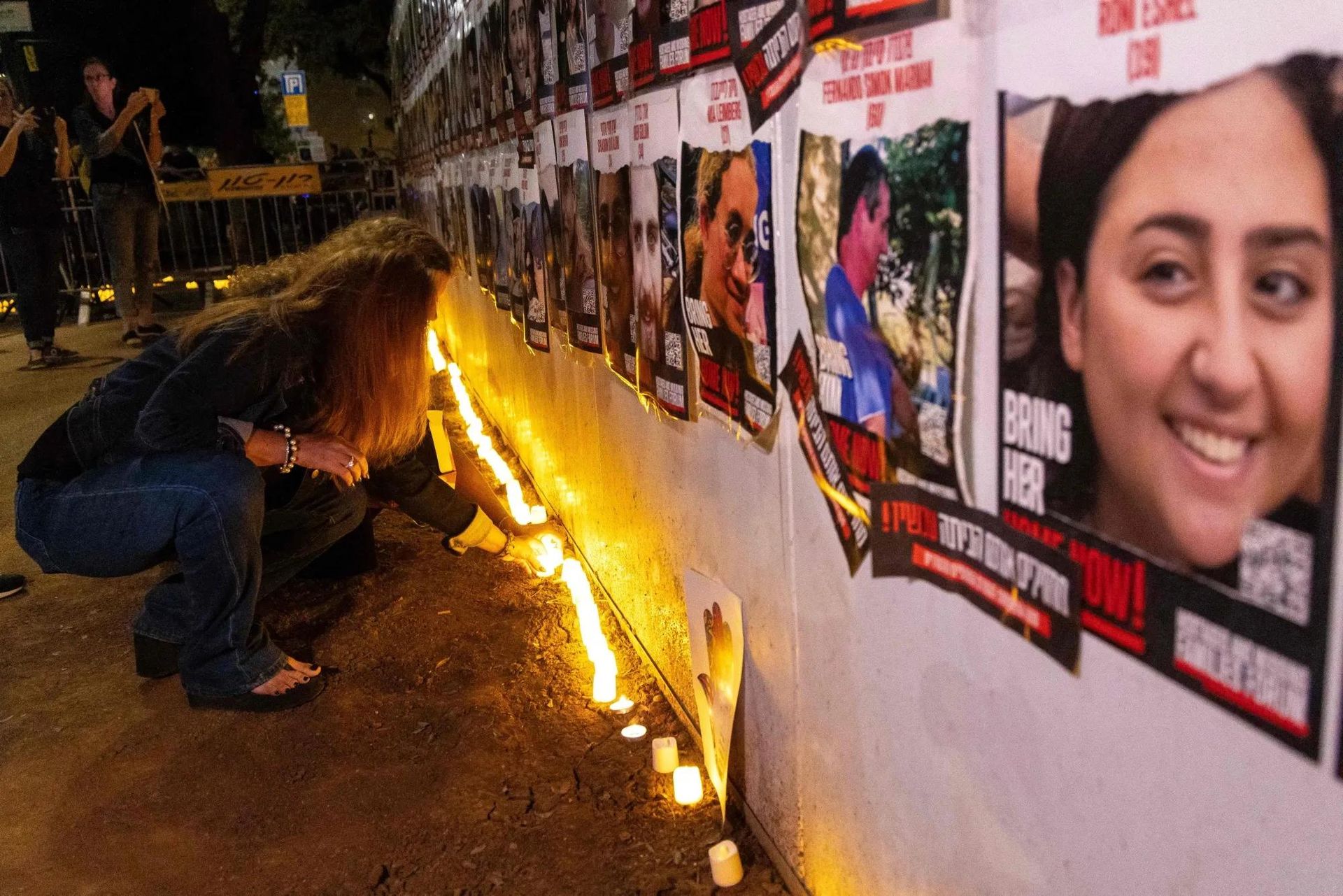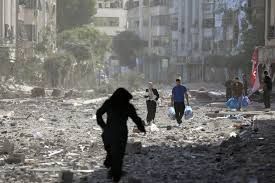Echoes from the Tunnels: Survivors Speak After Hamas Captivity
October 15, 2025 – Tel Aviv, Israel
In a moment that brought tears of joy and relief to a nation scarred by two years of unrelenting conflict, the final 20 living Israeli hostages abducted by Hamas on October 7, 2023, were released on October 13, 2025, as part of a U.S.-brokered ceasefire deal. Handed over to Red Cross officials in Gaza and transported across the border, these men—all survivors of the deadliest attack in Israel's history—reunited with families amid scenes of national celebration. Crowds gathered in Tel Aviv's Hostages Square, waving flags and chanting names, as helicopters ferried the pale, frail but resilient figures to hospitals for medical evaluations.

The release marks the culmination of grueling negotiations led by U.S. President Donald Trump, who hailed it as a "historic dawn" during a summit in Egypt's Sharm El-Sheikh. In exchange, Israel freed nearly 2,000 Palestinian prisoners and detainees, including those held without charge under "unlawful combatant" designations. Yet, as the euphoria fades, the hostages' emerging testimonies paint a stark picture of their ordeal: a world of darkness, deprivation, and psychological torment deep beneath Gaza's war-torn surface. While all 20 walked out on their own legs—smiling weakly for cameras—their stories reveal the human cost of Hamas's strategy, where captives were bargaining chips in a brutal game.
The Long Shadow of October 7
The nightmare began on a crisp autumn morning in 2023, when Hamas militants stormed southern Israel, killing about 1,200 people and abducting 251 hostages from kibbutzim, military bases, and the Nova music festival. Among the released were civilians like twins Gali and Ziv Berman, 28, kidnapped from their home in Kibbutz Kfar Aza, and IDF soldiers such as Matan Angrest, 22, dragged from his tank near Nahal Oz. Others, like Avinatan Or, 32, were separated from loved ones at the festival—Noa Argamani, his girlfriend, famously rescued in a daring IDF raid last year, awaited his return with bated breath.
By October 2025, 168 hostages had been returned alive through prior ceasefires, rescues, and unilateral releases, per Israeli officials. The remaining 20 endured 738 days in captivity, held in underground tunnels that former detainees describe as "living graves." Hamas has yet to return the bodies of 28 deceased hostages, despite ceasefire terms mandating their handover—a delay that has reignited anguish for families like that of Omri Miran, 48, whose wife and two young daughters watched his emotional homecoming from afar.

A Descent into Darkness: Conditions of Captivity
Medical teams at facilities like Sheba Medical Center and Beilinson Hospital report that the released hostages are in stable but weakened condition. Many arrived emaciated, with untreated injuries, skin ailments, and signs of malnutrition from chronic food and water shortages. "They were pale, with sunken eyes, but their spirits—those unbreakable Israeli spirits—shone through," said Dr. Roni Peleg, who oversaw initial assessments.
Hostage accounts, shared in initial interviews with Israeli media like Channel 12 and Kan Bet, detail a regime of isolation and scarcity. Held in small, windowless cells or chained in tunnels, captives received meager rations—often rice, beans, and brackish water—supplemented sporadically with dates or canned goods. Medical care was rudimentary at best; chronic conditions like diabetes went unmanaged, and wounds from the initial abduction festered without antibiotics.
Evyatar David, 26, and his childhood friend Guy Gilboa-Dalal, 24—abducted together from the Nova festival—described being separated for months in "stifling heat and dripping dampness." David, speaking from his hospital bed, recounted digging mock graves under guard orders for Hamas propaganda videos, a psychological ploy to break their will. "They wanted us to feel like we were already dead," he said, his voice steady but eyes distant. Gilboa-Dalal echoed this, noting how captors blasted distorted news reports claiming Israel had "abandoned" them, fueling despair.
Tal Shoham, released earlier but whose family ties into the broader narrative, called his 505 days in Gaza a "graveyard of the soul." Abducted with his wife and children from Kibbutz Be'eri, he witnessed "severe psychological warfare," including false claims of Israeli surrender. Matan Zangauker, 25, freed alongside his former partner Ilana Gritzewsky (released in November 2023), spoke of skin infections from unsanitary conditions and the constant fear of tunnel collapses during Israeli airstrikes.
Yet, amid the horror, some noted glimmers of humanity from individual guards—sporadic extra food or quiet conversations about shared dreams of peace. Elkana Bohbot, 36, an event organizer at Nova, credited "one guard who slipped us candy" for small mercies, though he emphasized these were exceptions in a system designed to dehumanize.
"Monsters in the Dark": Psychological Torment and Calls for Justice
The true weapon, hostages say, was the mind games. Captors like those holding Avinatan Or isolated him for nearly the entire two years, depriving him of human contact beyond interrogations. Or, reunited with Argamani in a tearful embrace, described beatings for refusing propaganda statements and endless loops of manipulated footage portraying Israel as the aggressor. "They called us spies, animals. But we refused to break for the monsters," he told reporters.
IDF soldier Nimrod Cohen, 20, pulled from his disabled tank, relayed messages through earlier releases: "I'm okay, don't worry." But privately, he admitted to nightmares of execution threats. Twins Gali and Ziv Berman, separated post-abduction, endured what their aunt called "the longest time apart in their lives," with one twin hallucinating from dehydration.
These stories underscore a pattern: Hamas's use of captives not just as leverage but as tools for morale-breaking and media manipulation. Videos released by the group—showing emaciated figures like Bipin Joshi, a Nepalese student killed in captivity—sparked global outrage. Joshi's family, who lobbied tirelessly, learned post-release that he was "murdered in the first months," his body returned among the deceased.
In group debriefs, survivors like Alon Ohel, 24—a budding pianist kidnapped en route to music school—urge continued pressure for the dead. "We walked out alive, but 28 did not. Their families deserve closure," Ohel said, his fingers twitching as if still playing keys in the dark.
A Nation Heals, But Scars Remain
As Israel exhales, the release symbolizes more than personal reunions—it's a pivot toward fragile peace. President Isaac Herzog called it "thanks to God," while families like Miran's declared it a "victory for an entire people." Crowds at Re'im base cheered helicopters, and yellow ribbons—symbols of solidarity—came undone in parliament.
But experts warn of long-term trauma. Psychologists anticipate years of therapy for PTSD, with hostages like Or facing reintegration challenges after isolation. Public figures, including Einav Zangauker (Matan's mother and a protest leader), vow to advocate for Gaza's reconstruction while demanding Hamas's disarmament—a ceasefire stipulation still in flux.
For now, amid barbecues and hugs in hospital corridors, the hostages' voices remind us: Survival isn't just physical. It's the refusal to let darkness claim the light. As David put it simply, "We came home to tell the world: Never again."